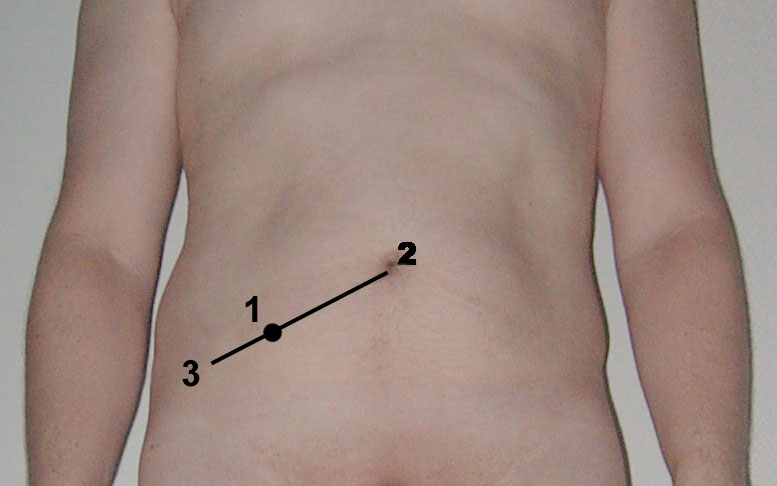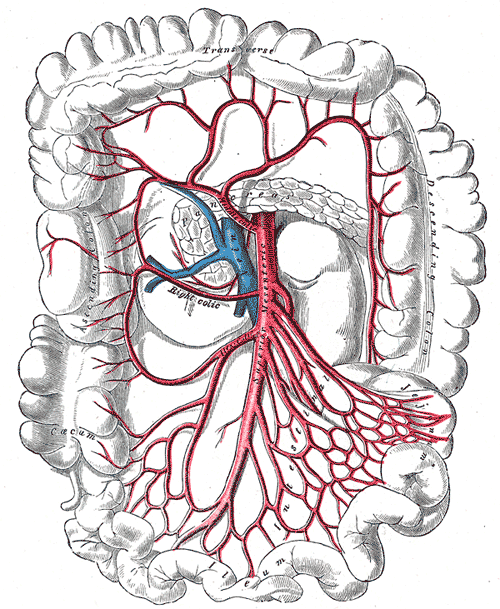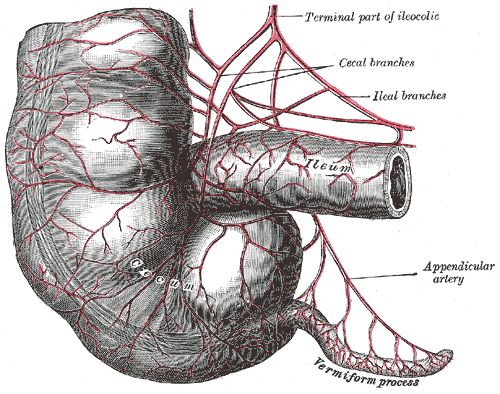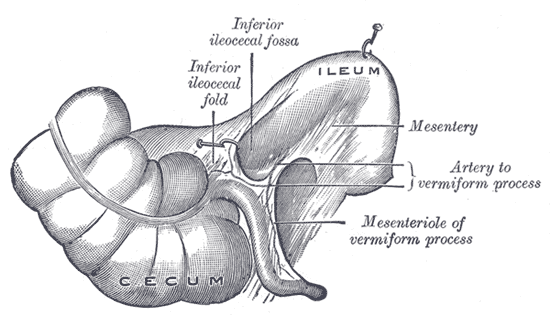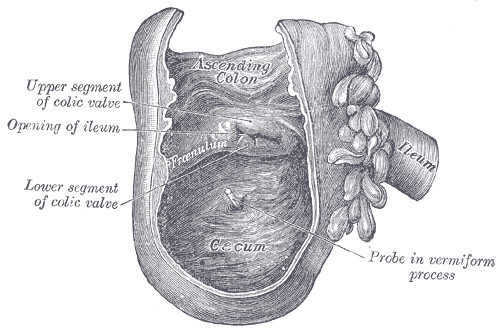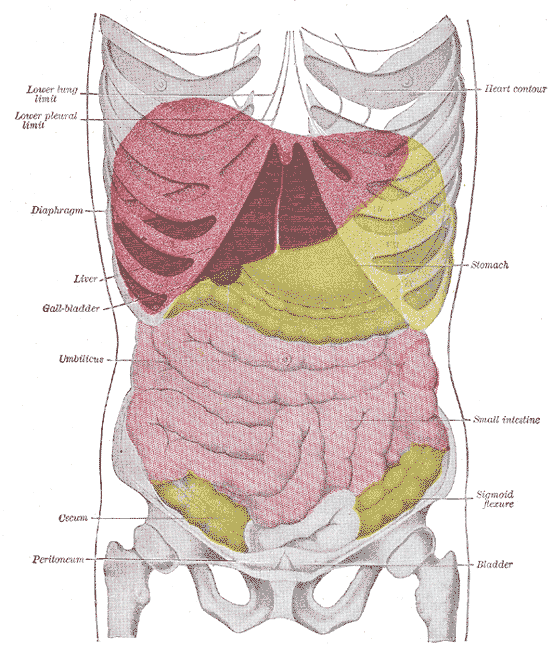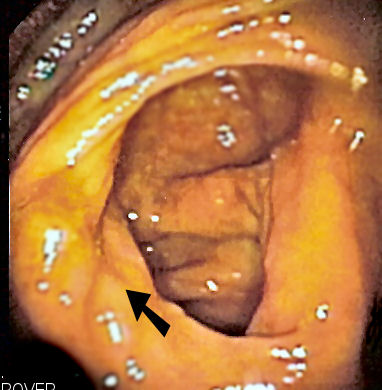Cecum
Overview
|
WikiDoc Resources for Cecum |
|
Articles |
|---|
|
Media |
|
Evidence Based Medicine |
|
Clinical Trials |
|
Ongoing Trials on Cecum at Clinical Trials.gov Clinical Trials on Cecum at Google
|
|
Guidelines / Policies / Govt |
|
US National Guidelines Clearinghouse on Cecum
|
|
Books |
|
News |
|
Commentary |
|
Definitions |
|
Patient Resources / Community |
|
Directions to Hospitals Treating Cecum Risk calculators and risk factors for Cecum
|
|
Healthcare Provider Resources |
|
Continuing Medical Education (CME) |
|
International |
|
|
|
Business |
|
Experimental / Informatics |
The cecum or caecum (from the Latin caecus meaning blind) is a pouch connected to the ascending colon of the large intestine and the ileum. It is separated from the ileum by the ileocecal valve (ICV) or Bauhin's valve, and is considered to be the beginning of the large intestine. It is also separated from the colon by the cecocolic junction.
Variation across species
The cecum is present in mammals, and two ceca are present in most birds, and some reptiles.
Most herbivores have a relatively large cecum, hosting a large number of bacteria, which aid in the enzymatic breakdown of plant materials such as cellulose.
Exclusive carnivores, whose diets contain little or no plant material, have a reduced cecum, often partially or wholly replaced by the vermiform appendix.
Etymology
The term cecum comes from the Latin, meaning blind gut or cul de sac.
In dissections by the Greek philosophers, the connection between the ileum of the small intestines and the cecum was not fully understood. Most of the studies of the digestive tract were done on animals and the results were compared to human structures.
The junction between the small intestines and the colon, called the ileocecal valve, is so small in some animals that it was not considered to be a connection between the small and large intestines. During a dissection, the colon could be traced from the rectum, to the sigmoid colon, through the descending, transverse, and ascending sections. The colon seemed to dead-end into the cecum, or cul-de-sac.
However, the connection between the end of the small intestines, ileum, and the start of the colon, cecum are now clearly understood, but the name has not changed.
See also
Additional images
-
Location of McBurney's point (#1)
-
The superior mesenteric artery and its branches.
-
Arteries of cecum and vermiform process.
-
Inferior ileocecal fossa.
-
Interior of the cecum and lower end of ascending colon, showing colic valve.
-
Topography of thoracic and abdominal viscera.
-
Endoscopic image of cecum with arrow pointing to ileocecal valve in foreground.
External links
- Photo at mgccc.cc.ms.us
- Template:SUNYAnatomyFigs - "Abdominal organs in situ."
- Template:SUNYAnatomyFigs - "The larger intestine."
- Template:SUNYAnatomyFigs - "The cecum with the distal portion of the ileum."
- Template:SUNYAnatomyLabs - "Incisions of the Cecum"
- Template:ViennaCrossSection
- Video clip of worms in the Cecum
cs:Slepé střevo da:Blindtarm de:Blinddarm eo:Cekumo id:Usus buntu it:Cieco (anatomia) lt:Akloji žarna nl:Blinde darm no:Blindtarm simple:Cecum sk:Slepé črevo sl:Slepo črevo fi:Umpisuoli sv:Blindtarm
